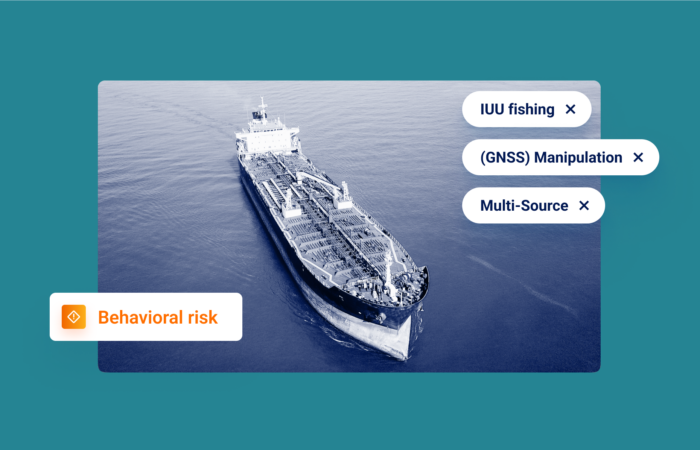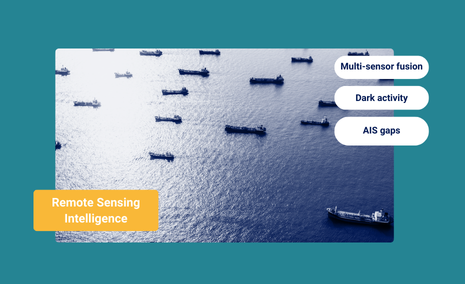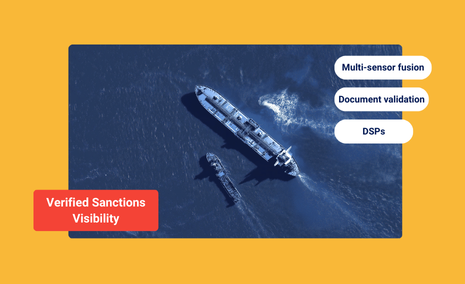4 Key Takeaways from WEST 2024

What’s inside?
San Diego was unseasonably sunny as Windward arrived at WEST 2024, but the swarms of people crossing Harbor Drive weren’t heading to the marinas. Instead, we were all heading to the convention center, where the conference took place.
Many of the attendees spend their working hours close to the sea – in ports, on ships, or in commands overlooking the waters. They are the men and women tasked with keeping the waters and shores safe and secure – a challenging mission, but even more so in these rapidly changing times.
We were there to meet our industry partners and learn about the current sea challenges facing the Navy, Marine Corps, and Coast Guard. The coming together of industry and military was marked by a fruitful exchange of ideas – we learned about the most pressing concerns and needs, and we presented the technological solutions we believe can help address them.
Here are several of Windward’s main takeaways from the conference.
1. Readiness for Today While Building for Tomorrow
The defining challenge of the industry voiced by many speakers and panelists was the need to develop readiness for today, while also building for tomorrow. Each speaker, – whether from the Navy, Coast Guard, or Marine Corps – spoke about the need to constantly monitor the here and now against immediate or imminent threats.
Each speaker also readily acknowledged that security is equally based on preparing for the challenges of tomorrow, which are always changing and evolving. With the Red Sea crisis, the first of many such possible scenarios, learning had to happen quickly and the prism through which security was understood had to be broadened to include the protection of vital trade routes across the globe.
The mission of these naval organizations is considerably wider than the American waterways and shores. It extends to protecting allied nations against illegal, unregulated, and unreported (IUU) fishing that is depleting their resources, responding to global trade disruptions, displaying American presence in volatile areas, and fighting the entry of drugs that threaten communities at home.
These missions can’t be prioritized; there is no choosing between them. The question is not what gives way, but rather, how can we create mass impact without mass force? How do we amplify capability without needing to endlessly scale up the number of vessels, personnel, and weaponry? A common answer was through industry partners and the technology they are developing.
2. Increased Reliance on Unmanned Technology Requires the Industry’s Help
100% coverage of territorial waters, 100% of the time would be utopia, but it is not feasible. The oceans are just too large. Mitigation of the gap between the aspiration and the limitations of reality lies in achieving operational efficacy by knowing where and when to deploy, to expand coverage. If you can’t see everything, make sure you position yourself to see the things that matter.
To achieve this, the U.S. Department of Defense and the Navy are increasingly relying on unmanned technology on land, in the water, and in the air. New sensors are constantly being developed and deployed, which means a continuous flow of data. The challenge posed by this wealth of data is another key takeaway, to be discussed shortly. But decision-making has to start before the sensor is operational, in the pre-deployment planning stage.
Navy and Coast Guard personnel emphasized that strategic and effective deployment of these sensors is key to increasing coverage where it matters most, when it matters most. Simply dropping the sensor into the ocean (or upwards to the clouds) and hoping for relevant, timely, and actionable information is a little like sending a message in a bottle into the ocean and hoping it reaches a specific destination.
The industry’s contribution, said Navy and Coast Guard speakers, is to provide support in pre-deployment operational planning by helping determine where and when the sensor would be most effective. The key is the right information at the right time. Technology can help identify behavioral anomalies or emerging trends that need to be explored or clear a certain area for safe deployment. It can also help with taking the data that is collected by each sensor once deployed and transforming it into insights.

3. Data is a Means, Actionable Insights are the End
Obtaining the data is not the challenge, speakers said, the issue is what you do with it once you have it. Beyond sharing it, how do you extract, manage, and make sense of the wealth of data that is collected and monitored in support of the mission?
The difficulty is twofold; first, multiple data sources – from military and commercial sources – feeding into one operating picture need to speak the same language; second, once they are situated within one platform, how does this endless sea of data transform into actionable insights that can effectively inform decision-making?
To address these issues, it’s important to prioritize data-agnostic platforms that can integrate multiple and distinct data sources into one operating picture. In addition, it is necessary to remember that data is a means, not an end. Rather, it is in the insights it helps us generate and the decisions it informs.
In almost every single panel and keynote address, military partners invited the industry’s help in making sense of the data and converting it into insights and decision intelligence. The ask was clear: don’t just help us find the dot on the screen; help us go beyond to understand what it is, where it’s coming from, and how risky it is.
4. Sharing Information is Critical to Mission Success
The diversity of uniforms seen across the conference floor, in panels, and in line for coffee, was a sartorial illustration of the intra-agency nature of WEST 2024. It spoke to something much larger, a principle that was affirmed again and again by speakers: given the mounting security challenges, no one agency can do it alone. Missions often involve dozens of different agencies and organizations, and collaboration between troops on the water, on land, and in the air is paramount to mission success.
Information is as critical a resource as any weapon, and the simple, easy, and fast sharing of information between one agency and another is not a “nice to have.” It can be the thing on which the very mission depends. A common operating picture (COP) that receives data from multiple sources and shares it with relevant stakeholders in real time can be as challenging to create as it is critical.
The main underlying cause is the nature of the information, which is classified in many cases and harder to share, especially between organizations. Open-source architecture that allows for the seamless transfer of data is one key way to overcome this specific hurdle.
Enhancing Operational Visibility and Integration
The insights gathered from WEST 2024 underscore the urgent need for solutions that transcend traditional boundaries, ones that are unclassified and seamlessly integrate into existing workflows and COPs. These solutions must provide unparalleled visibility into comprehensive insights, especially for those currently operating without visual tools.
Emphasizing the collaboration between the military and industry, the conference highlighted the collective endeavor to harness technology in overcoming the multifaceted challenges of today’s security landscape.
As we venture forward, the imperative is clear: to forge a path where technology and strategic innovation converge, enabling all stakeholders to navigate the complexities of maritime and logistical challenges with greater efficiency and foresight.












